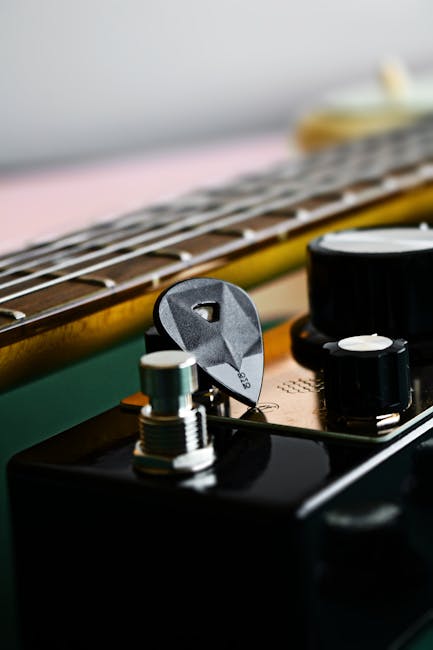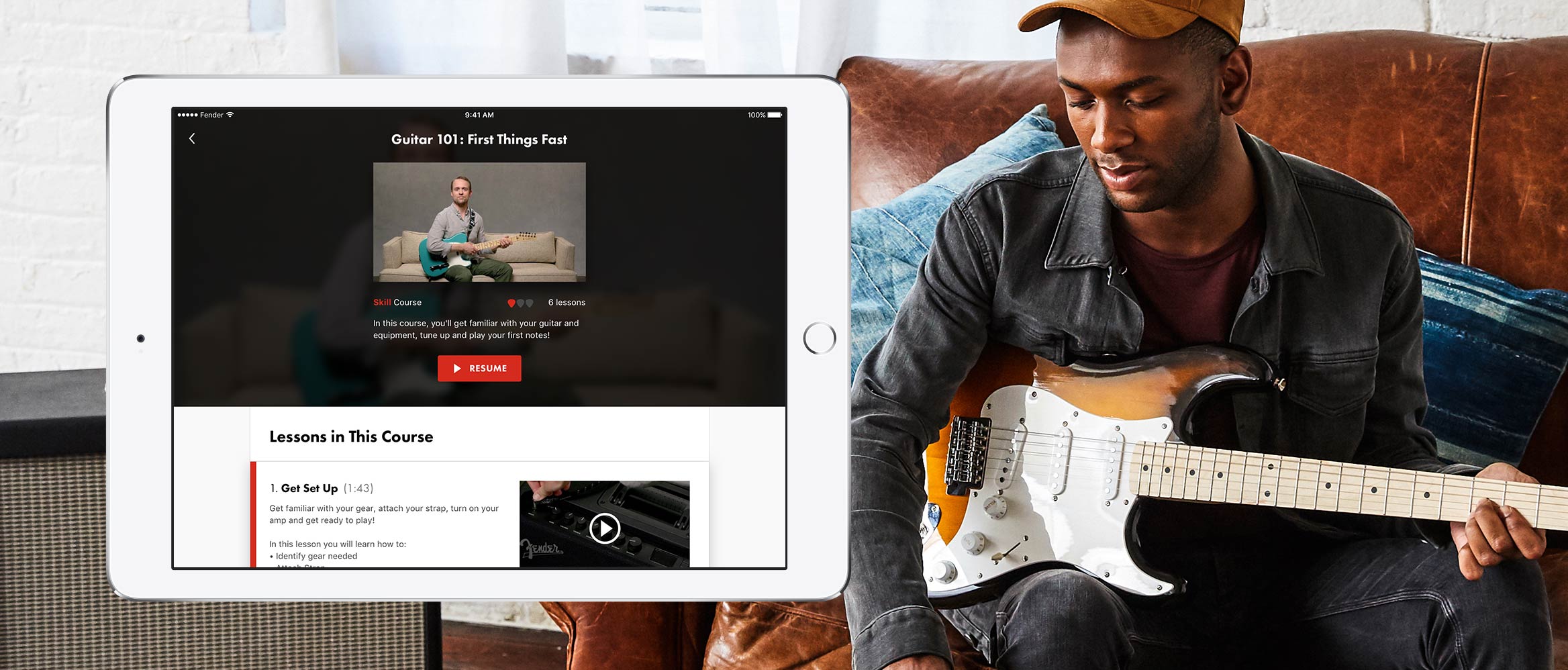So you’ve decided to embark on the wild and wonderful journey of learning to play the guitar, huh? Well, buckle up buttercup, because it’s gonna be a bumpy ride filled with sore fingertips, confusing chord transitions, and the inevitable existential crisis of wondering if you’ll ever be able to master “Smoke on the Water”. But fear not, dear reader, for I am here to guide you through your first guitar lessons with the precision of a surgeon and the comedic timing of a stand-up comedian on their fourth cup of coffee. So grab your guitar, your tuner, and a healthy dose of self-deprecating humor, because we’re about to dive headfirst into the world of rock ‘n’ roll and questionable fashion choices. Let’s do this thing!
Contents
- 1 Understanding the Anatomy of Your Guitar
- 2 Developing a Solid Foundation with Correct Posture and Hand Positioning
- 3 Navigating the Fretboard: Basics of Chords and Scales
- 4 Strumming and Picking Techniques: The Pathway to Precision
- 5 Exploring Musical Genres and Their Impact on Guitar Play
- 6 Incorporating Daily Practice Routines for Sustained Progress
- 7 Adopting the Mindset of Continuous Learning and Improvement in Guitar Mastery
- 8 FAQs
- 9 Rock on and keep strumming!
Understanding the Anatomy of Your Guitar
So you’ve decided to take up playing the guitar, but you’re feeling a bit overwhelmed by all the intricate parts of this stringed instrument. Fear not, my fellow aspiring rockstar! Let’s break down the anatomy of your guitar in a way that even your grandma could understand.
First things first, let’s talk about the body of the guitar. This is the big, curvy part that holds everything together. It’s like the torso of a supermodel, except instead of abs, it’s got a sound hole (or two) and a bridge where the strings hang out and party all day.
Next up, we’ve got the neck of the guitar. Think of this as the elongated neck of a giraffe, but instead of reaching for leaves, it’s reaching for those sweet, sweet chords. The neck is where you’ll find the fretboard, which is basically a musical grid where you’ll place your fingers to create those beautiful sounds that will make your neighbors love you or hate you.
And last but not least, we have the headstock. This is the top part of the guitar where the tuning pegs live. If the body is the heart and the neck is the brain, then the headstock is like the stylish hat that ties the whole outfit together. Just make sure those tuning pegs are in tip-top shape, or else you’ll sound like a cat being strangled when you play.

Developing a Solid Foundation with Correct Posture and Hand Positioning
Let’s face it, nobody wants to be the slouchy, hunched-over guitarist. Not only does bad posture make you look like an emo kid from 2005, but it can also lead to some serious back problems down the road. So, let’s talk about how to develop a solid foundation with correct posture and hand positioning.
First things first, sit up straight! Imagine a string attached to the top of your head pulling you upwards. Remember: you’re not a human question mark. Keep your back straight, shoulders back, and chest slightly lifted. It might feel weird at first, but trust me, you’ll thank me later.
Next, let’s talk about hand positioning. Your fretting hand should be relaxed, almost like you’re holding a small bird in your hand (but please don’t actually hold a bird while playing guitar). Keep your fingers curved over the fretboard, and make sure your thumb is resting comfortably on the back of the neck. None of this thumb-hanging-over-the-top business!
Lastly, always remember to breathe. Seriously, don’t forget to breathe. Playing guitar can get pretty intense, and the last thing you want to do is pass out mid-solo. So take a deep breath, relax, and rock on with your correct posture and hand positioning!

So you’ve picked up the guitar and now you’re ready to start mastering the fretboard! But where do you even begin? Let’s break it down for you in the most hilarious way possible.
First things first, let’s talk about chords. Chords are like the ingredients to a musical dish – they come together to create a delicious harmony. Start off by learning the basic open chords like G, C, D, and E minor. Pro tip: instead of trying to play them perfectly, just strum them wildly and pretend like you meant to do that.
Next up, we have scales. Scales are basically the alphabet for music – they help you navigate the fretboard with ease. Start with the good ol’ major scale and practice moving up and down the neck. Feel free to make funny faces while playing each note to really get into the groove.
Once you’ve got the basics of chords and scales down, it’s time to start experimenting. Try creating your own chord progressions or improvising using different scales. The fretboard is your playground, so don’t be afraid to get a little wild and crazy. After all, music is all about having fun!

Strumming and Picking Techniques: The Pathway to Precision
So, you want to master strumming and picking techniques, huh? Well, you’ve come to the right place! These skills are crucial if you want to become a precision player on the guitar. But fear not, with a bit of practice and dedication, you’ll be strumming and picking like a pro in no time!
First things first, let’s talk about strumming. The key to a killer strumming technique is all in the wrist. Make sure to keep your wrist loose and relaxed, as if you’re casually flicking away a pesky fly. And don’t forget to keep your strumming arm moving in a steady up-and-down motion. Trust us, you don’t want to end up looking like you’re trying to swat a bee when you play!
When it comes to picking, precision is the name of the game. Practice makes perfect, so start off slow and gradually increase your speed. And don’t just focus on picking in one direction – mix it up with some alternate picking to keep things interesting. Before you know it, you’ll be picking out notes like a ninja slicing through the air with a katana!
Remember, Rome wasn’t built in a day, and neither is a flawless strumming and picking technique. But with patience, perseverance, and a healthy dose of practice, you’ll be well on your way to becoming a guitar virtuoso. So grab that guitar, get strumming and picking, and let your precision shine through!

Exploring Musical Genres and Their Impact on Guitar Play
Let’s dive into the wonderful world of musical genres and how they can impact your guitar playing skills. From blues to metal, each genre offers its own unique challenges and styles that can keep you on your toes (or should I say, on your fingertips).
Take jazz, for example. This genre requires some serious improvisation skills and a good ear for complex chords and progressions. You might find yourself playing some crazy diminished or augmented chords that you never knew existed, but hey, that’s all part of the fun!
And don’t even get me started on country music. Those twangy licks and chicken pickin’ techniques can really put your picking hand to the test. But once you nail that perfect country solo, you’ll feel like a true cowboy (or cowgirl) riding off into the sunset on your trusty six-string steed.
So whether you’re shredding through a metal riff, strumming some soothing folk tunes, or getting jazzy with it, exploring different musical genres on your guitar can really expand your horizons and take your playing to the next level. So grab your guitar, crank up the amp, and let’s rock and roll through the wide world of genres!
Incorporating Daily Practice Routines for Sustained Progress
So you’ve decided to take your skills to the next level and incorporate daily practice routines into your schedule. Congratulations, you’re on the path to sustained progress! But how exactly do you stick to a consistent practice routine without losing your mind?
First things first, create a schedule that works for you. Whether you’re an early bird or a night owl, make sure to set aside a specific time each day to practice. Maybe it’s first thing in the morning with a cup of coffee, or maybe it’s after work with a glass of wine – whatever floats your boat!
Next, break down your practice sessions into smaller, manageable chunks. Instead of trying to cram everything into one long session, focus on specific skills or techniques each day. Maybe Monday is dedicated to scales, Tuesday to arpeggios, Wednesday to sight-reading – you get the idea!
And most importantly, don’t forget to reward yourself for sticking to your practice routine. Whether it’s treating yourself to a fancy dinner, buying a new piece of equipment, or indulging in some guilty pleasures – you deserve it! After all, sustained progress deserves sustained rewards!
Adopting the Mindset of Continuous Learning and Improvement in Guitar Mastery
So, you’ve decided to take your guitar skills to the next level and become a master of the instrument. Well, buckle up, because the journey to guitar greatness is not for the faint of heart!
One of the most important things to keep in mind on your quest for guitar mastery is the mindset of continuous learning and improvement. This means that you should never be satisfied with your current skill level and always be looking for ways to improve. Whether it’s learning a new chord, mastering a difficult riff, or perfecting your fingerpicking technique, there’s always something new to learn.
To help you on your path to guitar greatness, here are a few tips for adopting the mindset of continuous learning and improvement:
- Set goals: Make a list of specific skills you want to improve on and set achievable goals for yourself. Whether it’s learning a new song, improving your speed, or mastering a technique, having specific goals will help keep you motivated.
- Practice regularly: Consistency is key when it comes to improving your guitar skills. Make time to practice every day, even if it’s just for a few minutes. The more you practice, the faster you’ll see results.
- Seek feedback: Don’t be afraid to ask for feedback from friends, teachers, or other musicians. Getting an outside perspective can help you identify areas for improvement that you may not have noticed on your own.
FAQs
Why is precision important when learning guitar?
Precision is crucial when learning guitar because it helps you to build a strong foundation of skills and techniques. Just like a house needs a solid frame, your guitar playing needs precision to ensure you’re hitting the right notes and playing with accuracy. Plus, who wants to hear a bunch of out-of-tune chords? Not even your cat will stick around for that.
How can I improve my precision when playing guitar?
Practice, practice, practice! Just like with anything else in life, the more you do it, the better you’ll get. Start off slow and focus on hitting each note perfectly before speeding up. And remember, Rome wasn’t built in a day – neither is your guitar prowess.
What are some common mistakes beginners make when trying to master their first guitar lessons?
Oh, where do I even begin? One common mistake is trying to tackle complex songs right off the bat. Take it easy, cowboy! Start with simple chords and techniques to build your skills gradually. Another mistake is not paying attention to your posture and hand positioning. It’s not a game of Twister – get those hands in the right position!
How can I stay motivated during the frustrating moments of learning guitar?
Ah, the joys of smashing your guitar against a wall in frustration – we’ve all been there. But seriously, remember why you started learning guitar in the first place. Whether it’s to impress your crush or to become the next guitar god, keep that end goal in mind. And don’t be too hard on yourself – even Jimi Hendrix had to start somewhere.
Any tips for mastering barre chords with precision?
Barre chords can be a pain in the neck – literally. But fear not, my guitar-wielding friend. Make sure your thumb is positioned correctly behind the neck of the guitar to provide support. And practice transitioning between barre chords and open chords to build up strength and dexterity in your fingers. Before you know it, you’ll be shredding like a pro!
Rock on and keep strumming!
Congratulations on taking the first steps on your guitar journey! Remember, practice makes perfect, so keep jamming out those chords and riffs with precision. Soon enough, you’ll be a guitar hero in no time. So pick up that guitar, play with passion, and rock on!



